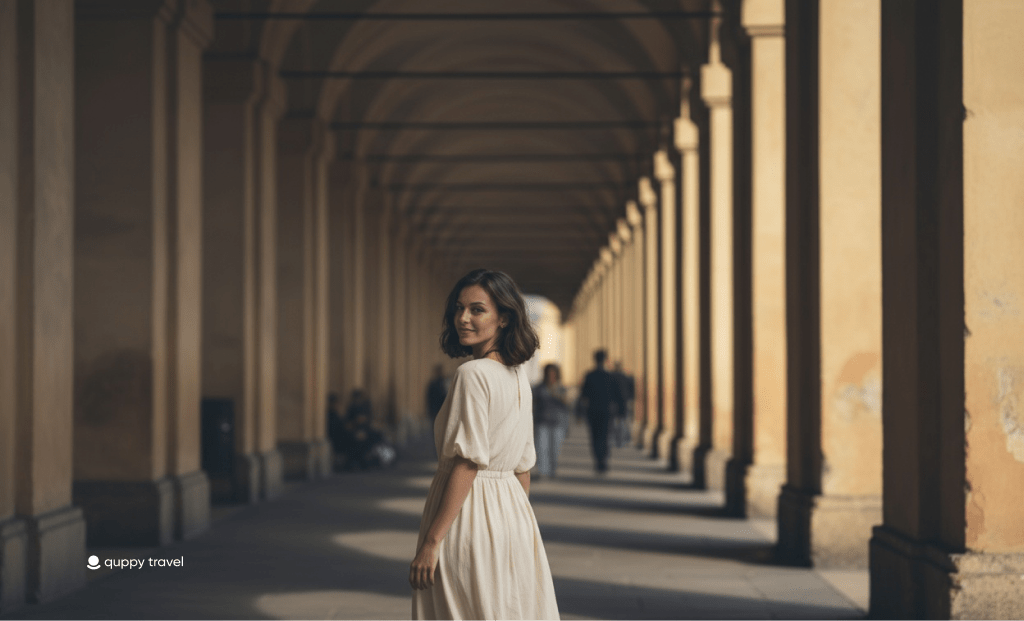Food
Food Categories, unlike tags, can have a hierarchy. You might have a Jazz category.
Search
Food Categories, unlike tags, can have a hierarchy. You might have a Jazz category.
Review Categories, unlike tags, can have a hierarchy. You might have a Jazz category.
Guides Categories, unlike tags, can have a hierarchy. You might have a Jazz category.
Travel Categories, unlike tags, can have a hierarchy. You might have a Jazz category.
![]() By Quppy
By Quppy
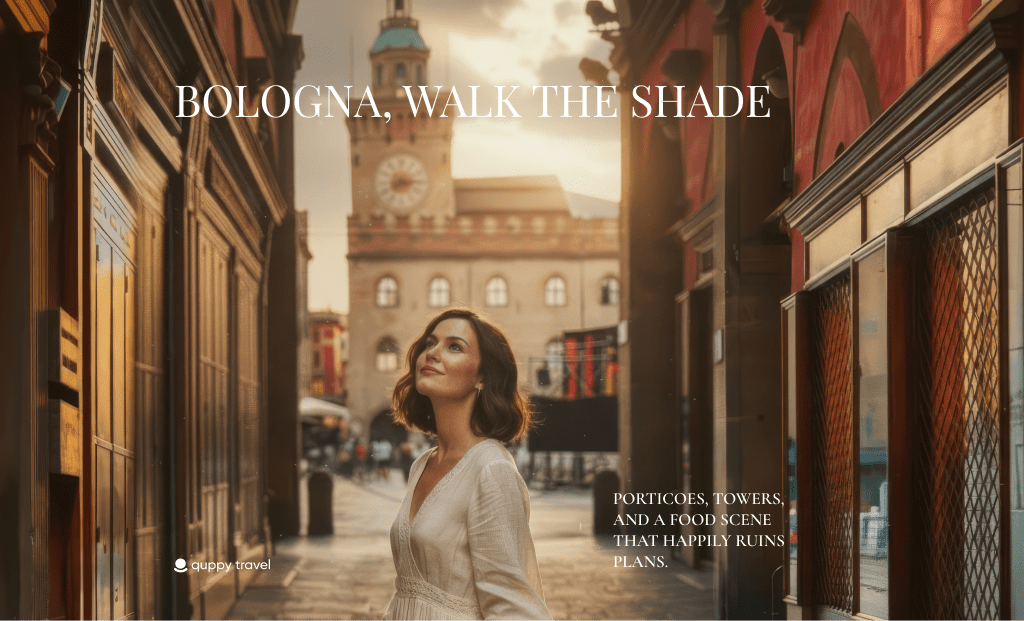
Porticoes that never end, towers tilting into the sky, and a food scene that ruins you—in the best possible way.
Bologna doesn’t shout. It invites. Twenty-five miles of porticoes pull you forward like a velvet ribbon—terracotta columns, shadow, sunlight, repeat. Students rush past with espresso to go, church bells punch the hour, and somewhere a saucepan hisses with butter and sage. This is a city built for walking, eating, learning, and then eating again.
Start at Piazza Maggiore—Basilica di San Petronio on one side, Neptune’s Fountain flexing on the other—and slip into the Portico di San Luca. It’s a procession of 666 arches winding uphill to the Santuario della Madonna di San Luca. Half pilgrimage, half leg day, all worth it. On clear days the red roofs spill to the Apennines like embers.
Micro-move: On the way back, detour through Via D’Azeglio—when the street buskers get it right, the whole portico becomes a stage.
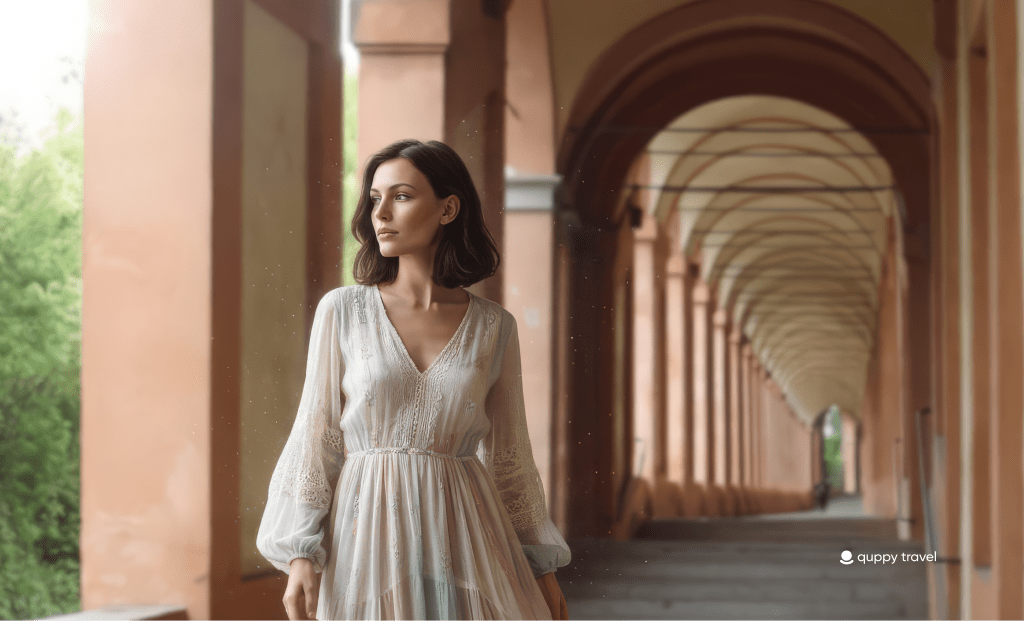
Bologna once had a skyline prickled with medieval towers; two survive as celebrities: Torre degli Asinelli (you climb) and Torre Garisenda (you admire its unapologetic lean). From the Asinelli’s top, the city is a terracotta sea, punctured by domes and courtyards.
Two streets over, the Archiginnasio—the first seat of Europe’s oldest university—houses the Teatro Anatomico, a wooden amphitheater where medicine learned to look. It’s eerie, exquisite, unforgettable.
Micro-move: Duck into Finestrella di Via Piella, the tiny “window on the canal.” One blink of Venice in a landlocked day.
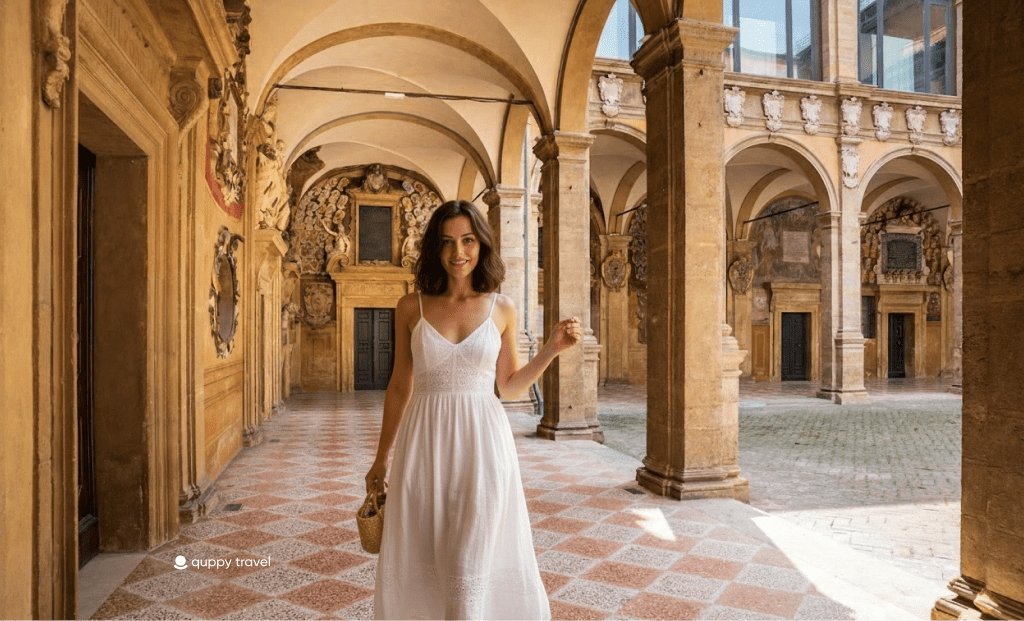
The Quadrilatero isn’t a market; it’s a performance. Fishmongers write poetry in ice, salumerie stack mortadella like rose quartz, and cheese counters go from Parmigiano Reggiano to Taleggio to “please, just give me a taste of everything.” A few streets away, Mercato delle Erbe trades tourists for locals: seasonal produce, pasta labs, and tiny counters serving hot daily specials.
Order here:
Lambrusco—sparkling, ruby, dangerously sippable
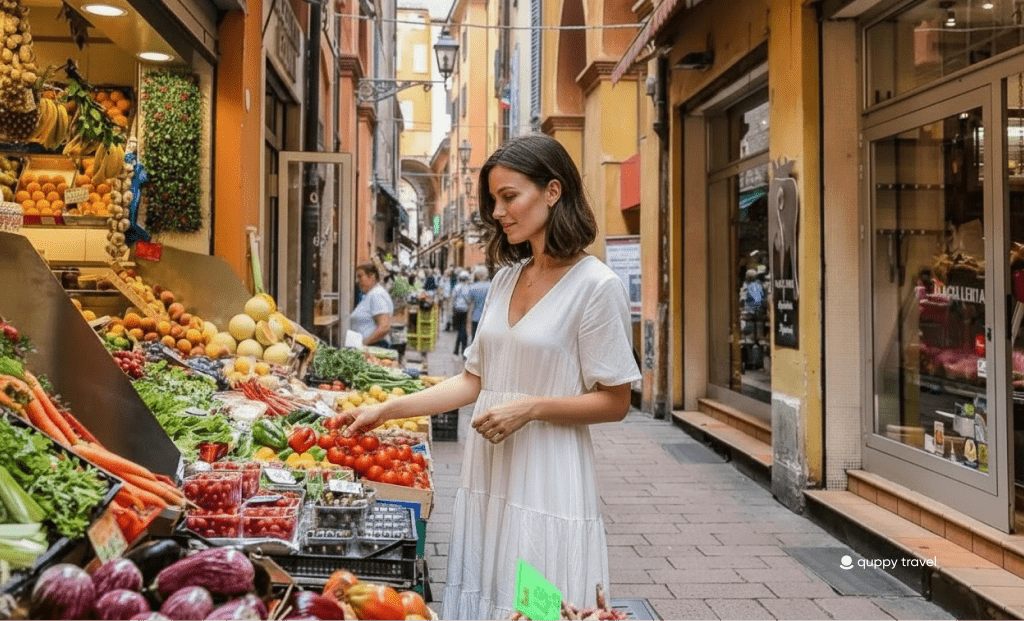
(Bookmark this; follow with patience and elastic waistbands.)
Dish Decoder (so you don’t order shy):
Cotoletta alla bolognese: Veal cutlet, ham, Parmigiano, sometimes truffle in season—Bologna doesn’t do restraint.

When daylight fades, students own the streets. Via Zamboni hums; Piazza Verdi becomes a collective living room. For wine with opinions, try Osteria del Sole (open since 1465—bring your own food from nearby delis); for jazz, Cantina Bentivoglio pops corks and standards.
Micro-move: Walk the late-night porticoes in rain. The city turns cinematic; your footsteps sound like a soundtrack.

Ragù pace: If it arrives in 5 minutes, you ordered a sermon, not a sauce.
Bologna’s markets are cash-happy, but your planning doesn’t have to be. With Quppy Wallet inside Quppy Travel you can top up EUR from crypto in-app, split a trattoria bill without hunting ATMs, and keep receipts tidy while you chase tortellini. Use small cash for nonna’s pasta lab; let Quppy handle the rest so your hands stay free for gelato.

08:30 Caffè Terzi → 09:15 Asinelli climb → 10:30 Archiginnasio & Teatro Anatomico
12:30 Quadrilatero grazing (Simoni + a glass of Lambrusco)
15:00 Portico di San Luca stroll (start from Porta Saragozza)
19:30 Tagliatelle al ragù at Da Bertino → 21:30 Le Stanze aperitivo → 22:30 Gelato at Santo Stefano → Late Osteria del Sole (BYO bites)
Some cities are a weekend; Bologna is a habit. You come for the ragù and stay for the rhythm—porticoes like parentheses around your day, towers marking time, kitchens that believe in slow answers to fast hunger. When you leave, you’ll dream in terracotta and wake up tasting sage.
